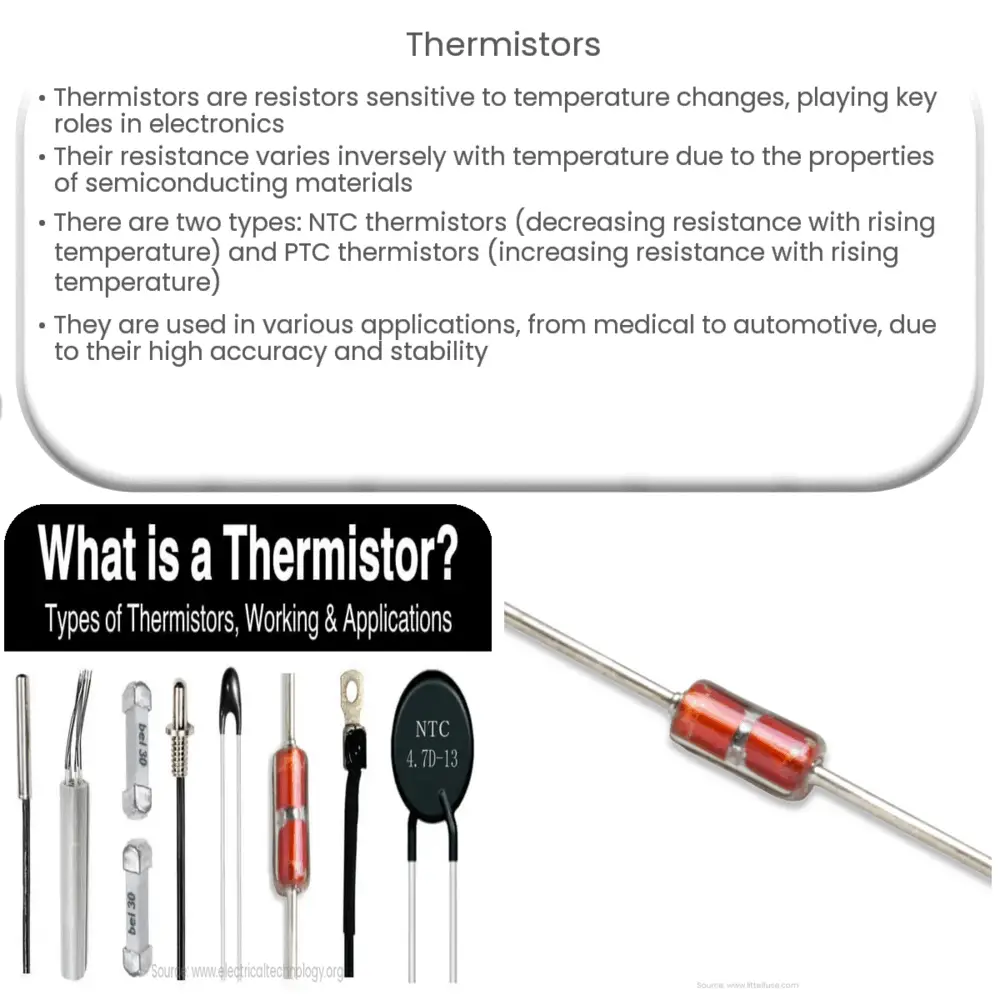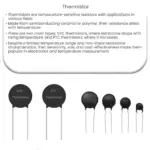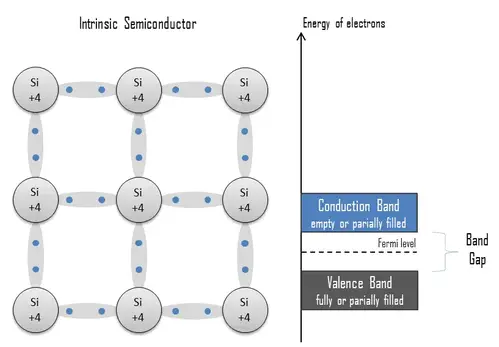Explore the world of thermistors, their types, working principles, applications, and future potential in our comprehensive guide.

Understanding Thermistors
Thermistors, a type of resistor whose resistance changes significantly with temperature, are pivotal components in many electronic applications. Derived from the words ‘thermal’ and ‘resistor,’ thermistors are sensitive to temperature changes, enabling them to perform key roles in a range of electronic devices.
The Working Principle of Thermistors
The working principle of a thermistor lies in its temperature-resistance relationship. The electrical resistance of a thermistor decreases as temperature increases, and vice versa. This characteristic is due to the properties of the semiconducting materials used in their construction, which alter their resistance in response to temperature changes.
Types of Thermistors
There are two main types of thermistors:
- Negative Temperature Coefficient (NTC) Thermistors: NTC thermistors are the most common type. In these thermistors, the resistance decreases as the temperature increases.
- Positive Temperature Coefficient (PTC) Thermistors: Conversely, in PTC thermistors, the resistance increases as the temperature rises.
Materials Used in Thermistors
The materials used to construct thermistors significantly influence their characteristics. These materials usually fall into two categories:
- Semiconductor Metal Oxides: A mix of several metal oxides like manganese, nickel, cobalt, and copper is used to manufacture thermistors. These mixtures provide a high negative temperature coefficient.
- Intermetallic Materials: Some thermistors use materials such as nickel-aluminium or nickel-manganese. These intermetallic thermistors usually have a positive temperature coefficient.
Applications of Thermistors
Thermistors find a plethora of applications due to their sensitivity to temperature changes. They are commonly used for simple temperature measurements, temperature compensation, and over-temperature protection. Specific applications include medical devices such as thermometers and thermostats, automotive devices, and home appliances.
Thermistor Circuits
Thermistors are integrated into electronic circuits in various ways, depending on the application’s requirements. A simple example of a thermistor circuit is a voltage divider circuit, where the thermistor’s change in resistance due to temperature variations influences the voltage across it. This voltage can then be used to provide a temperature reading.
Accuracy and Stability of Thermistors
Thermistors exhibit high accuracy in temperature sensing and stability over time. NTC thermistors, for instance, are known for their precise temperature measurement capabilities in a relatively limited temperature range. Meanwhile, PTC thermistors are often employed in situations where the temperature exceeds a particular threshold, such as over-temperature protection circuits.
Limits and Precautions with Thermistors
While thermistors are incredibly useful, they are not without their limitations. For one, they are sensitive to heat and can be damaged or experience reduced lifespan if exposed to temperatures beyond their specified range. Furthermore, the non-linear resistance-temperature relationship of thermistors makes them less suitable for applications requiring linear temperature sensing across a wide range. Care should thus be taken to select the appropriate thermistor type for the desired application.
Future of Thermistors
The future of thermistors looks promising with advancements in materials science and electronics. The development of new materials and fabrication methods promises to improve the performance characteristics of thermistors, such as their temperature range and long-term stability. Moreover, the trend towards miniaturization in electronics bodes well for thermistors as they can be made very small without compromising their functionality.
Conclusion
In conclusion, thermistors, as integral components in many electronic devices, are incredibly important for the world of electronics. Their ability to sense and respond to temperature changes makes them crucial for a multitude of applications, from simple temperature measurements to more complex applications like over-temperature protection. Despite their limitations, the continuing evolution of thermistors in line with technological advancements ensures their relevance in future electronic applications. Understanding the fundamentals of thermistors, therefore, provides valuable insight into many of the technologies we rely on daily.




